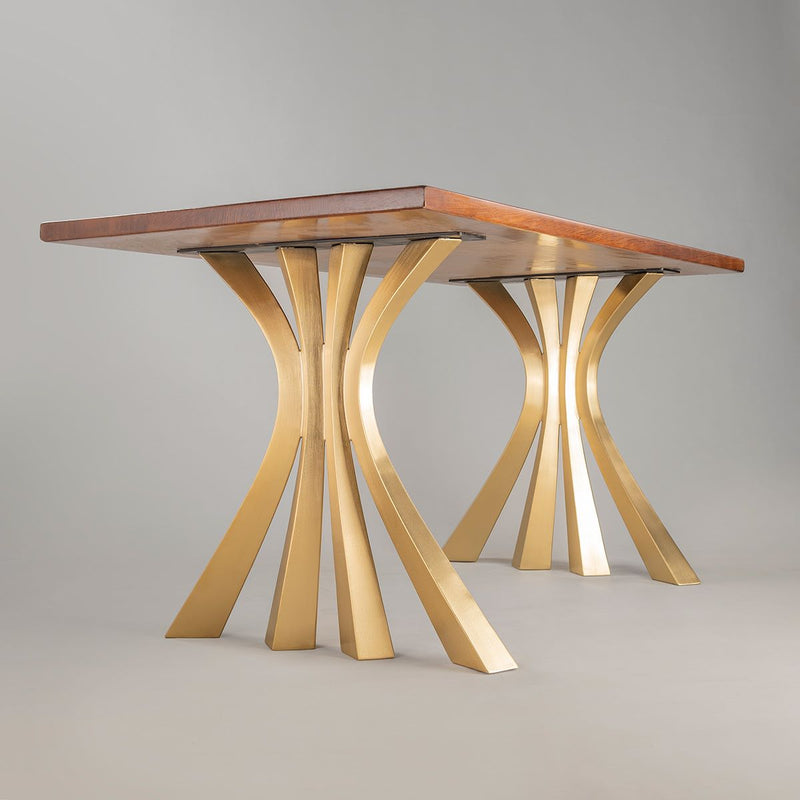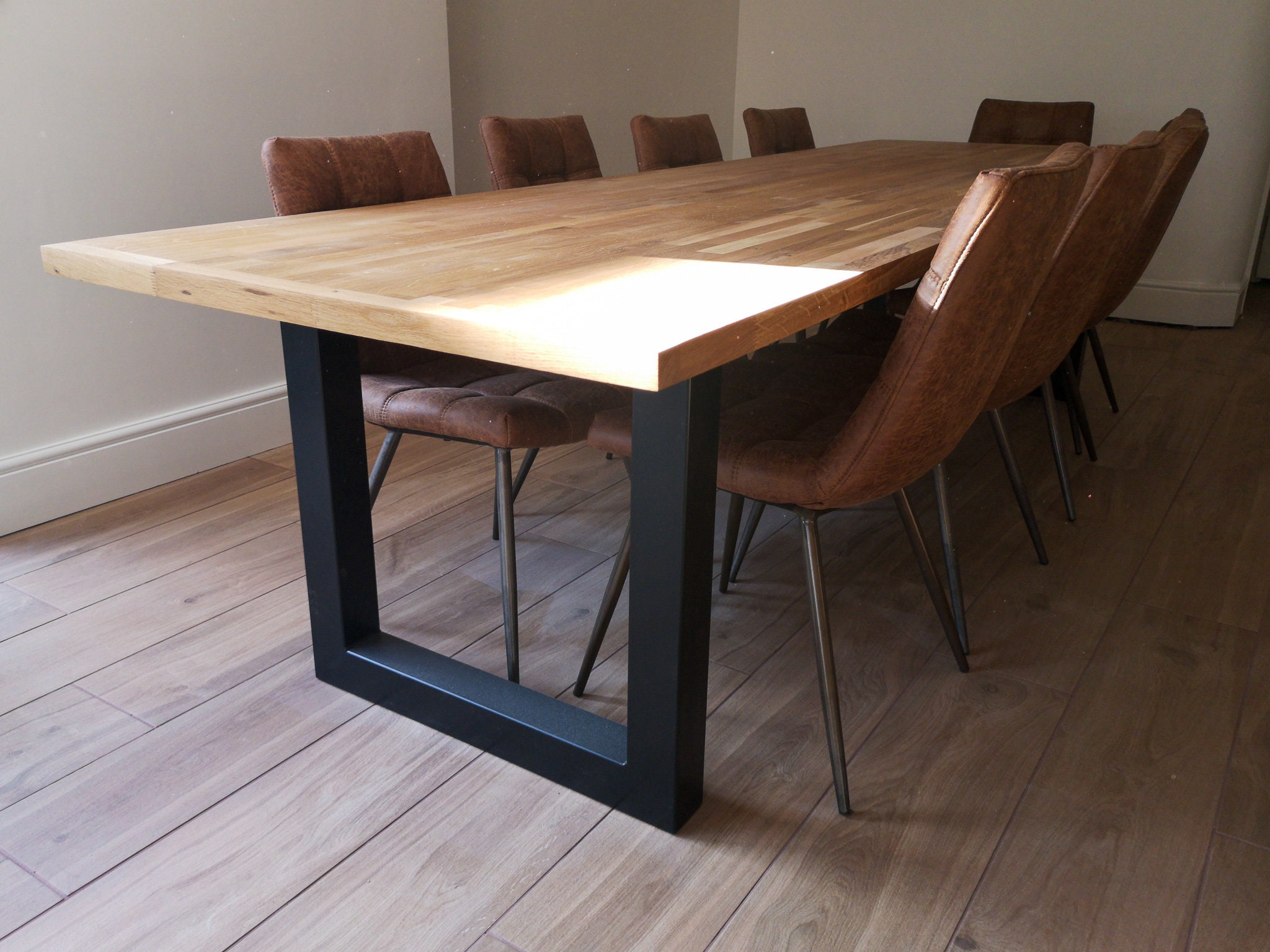Picking the Perfect Eating Table: What Styles Job Best for Your Home?
Picking the perfect dining table for your home can be a nuanced procedure that stabilizes appearances and performance. To browse these choices properly and locate a table that truly complements your home, consider the complying with elements in information.
Assessing Your Area
Reviewing the measurements and format of your eating location is an important initial step in picking the best eating table. Begin by measuring the length and width of the area, representing entrances, home windows, and other building features that can affect table positioning. This makes certain that your table not just fits however also enables comfy motion around it.
Consider the variety of people you typically amuse. A table ought to fit your home's everyday demands while offering sufficient versatility for occasional guests. Generally of thumb, assign a minimum of 24 inches of table size each to guarantee a comfortable dining experience.
It's also necessary to keep proper clearance around the table. Preferably, there ought to be at least 36 inches in between the table side and wall surfaces or various other furniture, enabling very easy gain access to and activity. For spaces where chairs with arms or additional storage devices like buffets are entailed, enhancing this clearance to 48 inches is recommended.
Lighting and atmosphere play substantial duties also. Ensure that your dining table lines up with existing illumination components or prepare for appropriate lighting solutions. This detailed spatial evaluation guarantees that your table not just fits literally however likewise harmonizes with your space's overall functionality and aesthetic.
Popular Table Styles

Conventional table frequently include luxuriant information, bent legs, and abundant timber surfaces, stimulating a feeling of classic style. They are perfect for homes with classic decor or those looking to add a touch of sophistication to their eating location.
Modern dining tables prioritize simpleness and tidy lines, usually incorporating materials like glass and metal. These tables are ideal for modern spaces, providing a sleek and minimalist look that complements minimal layout ideologies.
Rustic table, on the various other hand, emphasize all-natural materials and a handmade look - dining room table legs. They typically include reclaimed wood and a troubled surface, developing a warm and inviting atmosphere. These tables work well in farmhouse-style homes or those seeking a cozy, organic feel
Industrial dining tables combine basic materials such as metal and wood, usually showcasing an utilitarian aesthetic. This style is fit for loft spaces or metropolitan rooms, including a touch of tough beauty and longevity to the eating experience.
Each design supplies distinct advantages, making it necessary to choose one that straightens with your home's overall style and your personal choices.
Material Choices
When choosing an eating table, the choice of product plays an essential role in determining both the table's aesthetic appeals and capability. Wood, steel, glass, and composite products each deal unique benefits and challenges, making it critical to align the material with your home's decor and way of living needs.
Wood is a timeless and flexible choice, available in ranges such as oak, walnut, and mahogany. Understood for its resilience and warmth, timber matches both conventional and modern insides. It needs regular maintenance to prevent scratches and bending.
Metal tables, frequently crafted from stainless-steel, aluminum, or wrought iron, are commended for their contemporary appeal and robustness. click for info They are specifically suited for industrial or minimal settings yet can be prone to damages and may feel cool to the touch.
Glass dining tables bring anchor an air of style and openness, perfect for smaller rooms as they develop an impression of more space. While easy to tidy, glass can be vulnerable to smudges and calls for cautious dealing with to stay clear of chips and cracks.
Composite materials, such as MDF and plywood, deal economical and customizable services, though they might lack the longevity of natural materials. Picking the right material ensures your table is both a useful asset and a visual pleasure.
Sizes And Shape Considerations
After figuring out the ideal product for your dining table, the following consideration is choosing the right shape and size to fit your room. Conversely, rounded tables cultivate a sense of intimacy and are excellent for smaller dining areas, encouraging discussion by getting rid of corners and making everyone feel similarly included.
Size is similarly important and must be dictated by both the space's dimensions and the variety of individuals you intend to seat consistently. Generally of thumb, allot at least 24 inches of table width per individual to ensure comfy dining. Furthermore, take into consideration the table's clearance area: there need to be at least 36 inches between the table edge and the walls or various other furnishings. This makes sure that restaurants can walk around quickly without really feeling cramped. Extending tables provide versatility if you often hold larger celebrations, offering additional seats when required without occupying added area daily. Picking the best sizes and shape makes sure both functionality and aesthetic consistency in your dining area.
Matching Your Design
Selecting an eating table that balances with your Visit Your URL existing decor is crucial in developing a cohesive and welcoming space. Begin by examining your current indoor design style, whether it be contemporary, traditional, rustic, or diverse. The dining table should match the general visual, not contend with it. For example, a smooth, minimal table with clean lines is excellent for a modern-day home, while a vintage, luxuriant table matches an extra traditional setup.
Color and product are just as significant. If your design includes warm tones and all-natural products, think about a wood table to improve the organic feeling. On the other hand, a glass or metal table may be better suited in a room controlled by amazing colors and industrial components. Take note of the finish, as it needs to mirror other furniture and components to keep harmony.
A rough-hewn, redeemed timber table can include character to a rustic room, while a refined marble surface area can raise an elegant dining area. A well-matched eating table not only improves aesthetic allure yet also improves the overall eating experience.

Final Thought
Selecting the suitable eating table demands mindful factor to consider of room, style, materials, form, and size. Traditional tables enhance traditional insides with abundant timber coatings, while modern tables fit modern setups via glass and metal.
Comments on “Discovering Different Layouts for Dining Room Table Legs to Match Your Visual”